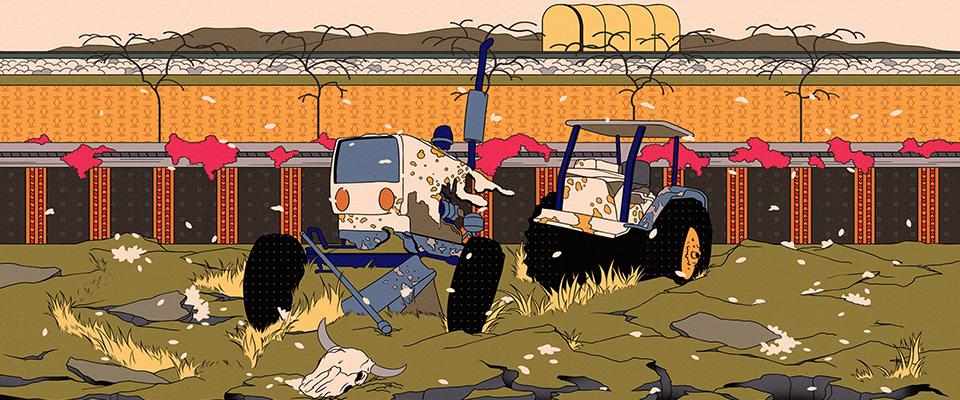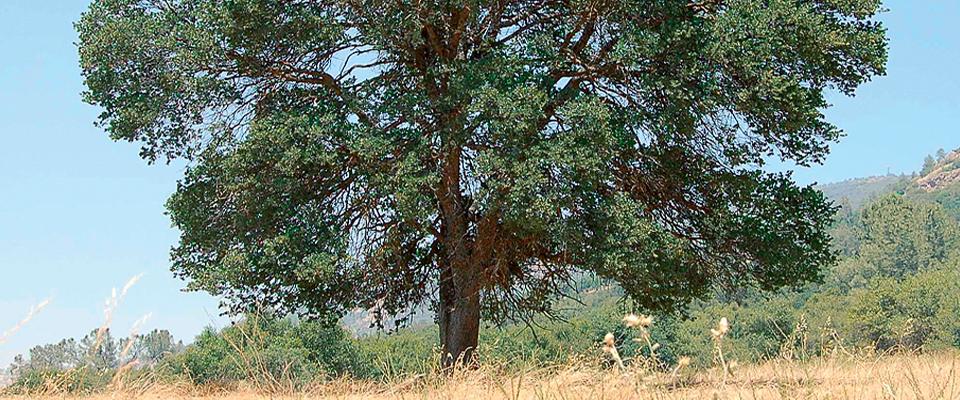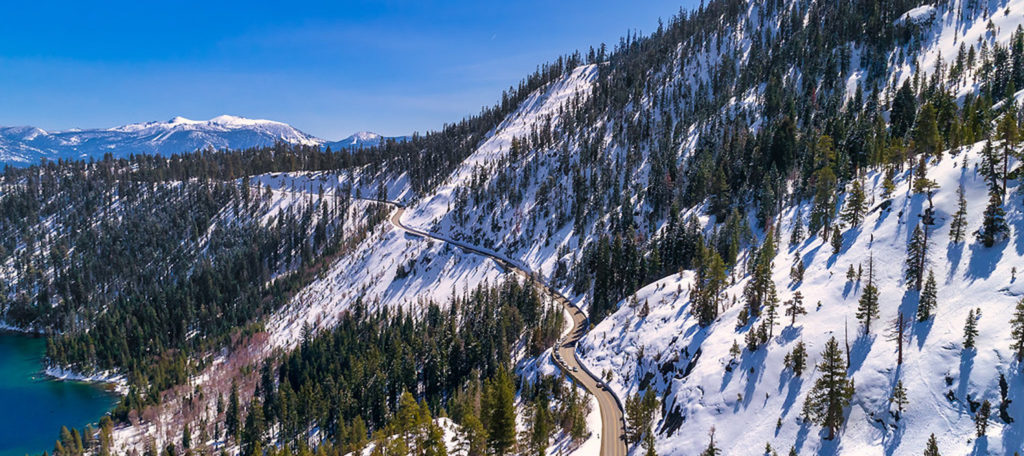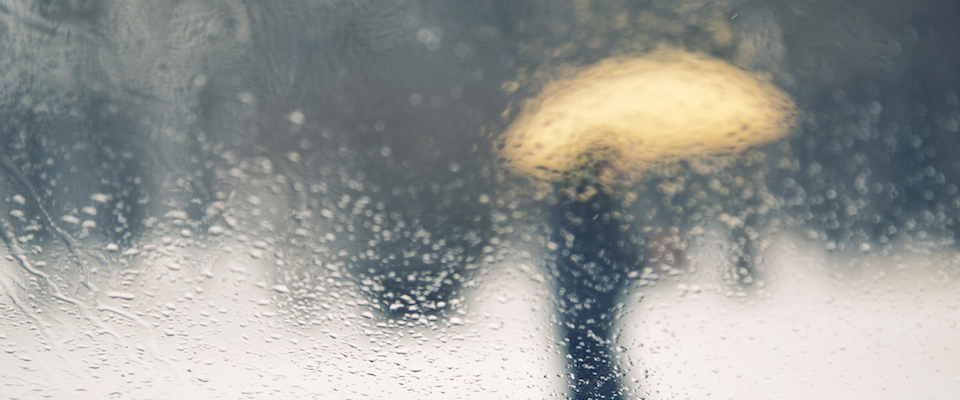Climate Shock
Editors’ Note: The Summer 2014 issue of California magazine is called “This is the End.” Every day this week: a different catastrophic scenario.
California’s climate, long known for having a sunny, likeable disposition, is poised to become a major bad actor. As anthropogenic climate change threatens the Sierra Nevada snowpack and brings even more uncertainty to a region already prone to extreme drought and flooding, catastrophic weather events may define our future.
Picture this: It’s 2115, and the drought that began in 2011 still grips the state. Due to warmer temperatures, the Sierra Nevada snowpack is a distant memory in old folks’ minds, and portions of the Central and Imperial Valleys have fallowed to dust. The state’s vast cattle herds were culled decades ago. Wildfires, frequent and fierce, burn across the state year-round. The state’s population has plunged as conditions become unbearable in many places once considered paradise. Palm Springs? A ghost town.
There are now two Californias, one called NorCal and the other SoCal. Secessionist movements, long a fixture of the Golden State, have succeeded at last. With political support from Washington state and Oregon, NorCal broke away from the south in 2060. Despite periodic border skirmishes between militias and vociferous opposition to the split from Washington, D.C., the 51st state has survived. Meanwhile, SoCal has seen a veritable exodus, with only true loyalists staying behind. The NorCal flag features a lush river flowing into the Pacific. The SoCal flag bears palm trees and a raised fist.
Today a century-long drought might sound like an apocalyptic fantasy hatched in the brain of some hack scriptwriter. But studying core samples of sediment in San Francisco Bay, Berkeley paleoclimatologist B. Lynn Ingram found evidence of two megadroughts during the so-called Medieval Warm Period (roughly A.D. 900–1400), each persisting for more than 100 years. Ingram’s work buttresses the findings of other researchers, including geologist Scott Stine at Cal State East Bay, Hayward, who also found evidence of these century-long droughts in the rings of carbon-dated tree stumps.
It would seem that the California we’ve enjoyed for the past 165 years, the one of moderate climate and adequate water—adequate largely thanks to massive engineered water projects—is an aberration. Like the long-vanished Anasazi of the Southwest, it seems we may have built our civilization based upon expectations formed during an anomalously wet period. On top of that, human-caused climate change is now adding a jokers-wild effect, which may force us to scale back and recognize that we cannot bend water to our will.
Drought isn’t the whole story, though; we have to worry about deluge as well. Ingram also found evidence of megafloods recurring every 150–200 years. “We think they’re just part of our natural climatology,” said Ingram. The most recent of these Biblical torrents, she says, came in 1861–62, when it rained for 43 days straight, leaving Sacramento and most of the Central Valley underwater.
To help envision what such a climatic event would mean in today’s California, the U.S. Geological Survey modeled a similar scenario in 2011. The hypothetical tempest, dubbed ARkStorm, flooded 6,000 square miles of the Central Valley. Coastal communities, including those in Orange and Los Angeles Counties, San Diego, and the San Francisco Bay Area, would also be inundated. Property damage and business interruption costs could top $725 billion. Hurricane Katrina, by comparison, cost $125 billion as of a year after the storm, according to the National Oceanic and Atmospheric Administration.
The many variables affecting climate change make it difficult to accurately forecast precipitation cycles in different parts of the state. For example, Dan Cayan, director of the Climate Research Division at Scripps Institution of Oceanography at UC San Diego, said the latest models show the northern two-thirds of the state maintaining the precipitation levels we’ve come to expect, while Southern California gets only a bit drier. But a report from the California EPA is more dire, projecting that by the late 21st century, the Sacramento Valley will see dry years 8 percent more often than in the period 1951–2000, and the San Joaquin Valley 32 percent more often.
But people adapt, right? We’re the cockroaches of the mammalian world, after all. Well, us and the raccoons.
One thing the models agree on is a much reduced Sierra snowpack because of rising temperatures. Snowpack loss is a big deal for the state, which has always relied on the frozen cache as a natural reservoir, storing water from winter storms, then meting it out slowly during the parched summer months.
But people adapt, right? We’re the cockroaches of the mammalian world, after all. Well, us and the raccoons. Of course, during the Medieval Warm Period, the Anasazi departed the Southwest and were never heard from again. Less well known is that the effects of that drought were also felt in Northern California. “There’s evidence in the coastal shell mounds around San Francisco Bay that there was malnutrition and violent conflict,” said Ingram. People abandoned their settlements to look for resources over a larger area.
Could it happen again? The imagination balks at the mere notion of a 100-year drought, and indeed most current analyses plan for droughts persisting for years, not decades. But Ingram’s findings pose a challenge: Can we prepare our infrastructure to withstand both megadrought and megaflood? The short answer: We’ll see.
If the snowpack diminishes or disappears, one of the first things we’ll have to do is find more places to store water. And that’s no easy task. As Peter Gleick explains, “There just aren’t many good places left” to build new reservoirs. Gleick, a MacArthur Fellow who has a master’s and a Ph.D. from Berkeley in energy resources, is president of the Pacific Institute, a nonprofit that conducts interdisciplinary research on water issues. He says replacing the snowpack’s services will require multiple strategies.
For starters, we will have to store water in overdrawn aquifers. We will also have to manage groundwater and surface water together, recognizing their interconnected nature: When we withdraw surface water, we also deplete groundwater, and vice versa. In the past they have been viewed as separate systems and managed separately, so it has been easier to use too much. And existing reservoirs will have to be operated differently. For example, a bigger spillway, like the one being built at Folsom Reservoir near Sacramento, will allow managers to release water more quickly if needed. That capability will allow managers “to store more water without an increased risk of flooding,” explained Gleick.
Another challenge in dry years is keeping salt out of our drinking water. Every fall, as river flows decrease, saltwater naturally moves up into the Sacramento-San Joaquin River Delta, a source of drinking water for more than two-thirds of Californians, explained Mark Stacey, a professor of environmental engineering at UC Berkeley. Saltwater tends to flow upstream because of tides and density differences, and in normal years, winter precipitation flowing through rivers pushes that “salt field” back down toward the bay. But when decreased river flows persist for multiple years, the river flow isn’t enough to push the salt field back, and it comes closer to cities’ intakes for drinking water. To keep that water free of saline, we can release water from reservoirs to push the salt downstream, but that takes away water from other uses.
Given that our water is already overallocated, the most effective way to manage water is to curb demand.
Some Californians are already drinking treated wastewater. Yes, the “toilet-to-tap cocktail” is already de rigueur in cutting-edge Orange County and is coming soon to a community near you.
Agriculture is the big daddy of water consumption in California, accounting for about 80 percent of our total usage, according to the state’s Department of Water Resources. Certainly, farmers could use water more efficiently. Fifty percent of the state’s agricultural acreage is still watered by farmers flooding their fields as opposed to using more-efficient sprinkler or drip irrigation methods, states a report from the Pacific Institute. It says California agriculture could conserve 15 percent of current consumption without affecting farm income or productivity, simply by improving irrigation efficiency and timing and with modest crop shifting. But severe drought, predicts W. Michael Hanemann, a Cal professor of resource economics, would require far more intensive crop switching and land fallowing measures.
Our cities use the other 20 percent of our water, and there’s still room to conserve by upgrading fixtures and appliances, and swapping out lawns for native plants. However, effluent reuse has the greatest potential to reduce urban water use, said David Sedlak, professor of civil and environmental engineering at UC Berkeley.
The idea isn’t new; in fact, treated sewage water is increasingly used for everything from landscaping to cooling water for power plants. “In Monterey and Salinas Valley, much of the strawberries and artichokes are grown with recycled wastewater effluent,” said Sedlak. More surprising is the fact that some Californians are already drinking treated wastewater. Yes, the “toilet-to-tap cocktail” is already de rigueur in cutting-edge Orange County and is coming soon to a community near you.
But before you panic and dial Alhambra to send its blue-sequined truck to your door, consider this: Upstream communities across the United States have long deposited treated wastewater into rivers above drinking water treatment plants. “In a sense, we’re all participating in reuse,” said Sedlak. “It’s just a question of dilution.”
Revising water rights is another important tool to give us more flexibility as precipitation fluctuates. California’s water rights system is complex and not geared toward water conservation, said Hanemann. Just one example among many: Riparian rights holders (people who own land that abuts a river) can withdraw as much water as they need. “If it’s a dry year, everybody has equal rights, but there’s no traffic light for everyone to reduce speed,” he explained.
Australia’s decade-long drought pressured that country to retool its water rights. And although what happened there is not a precise parallel, Hanemann cautioned, some of the strategies employed Down Under could transfer nicely to the Golden State. For example, Australia’s government bought up water rights from willing sellers. So far, California hasn’t had the political will or the money to make such changes, Hanemann said, “but a severe drought could change that.”
Where there’s water supply anxiety, there’s generally talk of desalination. The process is both enormously energy intensive and very expensive, with desalinated water costing as much as $3,000 an acre foot, compared with $1,000 or less per acre foot for water supply gained through conservation and efficiency. But an extended drought would put desalination discussions back on the table in many cities.
In this regard, Australia may be a cautionary tale, said Gleick. That country’s recent drought spurred it to build six massive desalination plants. After they were complete, the rains returned, relegating four of the plants to stand-by mode. Meanwhile, water customers are paying for the capital costs of the mothballed facilities. Still, the plant was right for Perth, which now gets about half its drinking water from desalination, reports Sedlak. “If you’re Perth, and the weather has changed, you don’t have a lot of other options,” he said. San Diego, another city with few natural water resources, apparently feels similarly. It’s currently building a desalination plant in Carlsbad.
Whether or not we see a megadrought in our lifetime, California’s water is already overallocated—a situation that’s unlikely to improve as our population grows and climate change advances. “There’s simply not enough water for everyone to do everything they want, as inefficiently as we’re doing those things,” said Gleick.
Megaflood, anyone?
Erica Gies is an independent journalist whose work appears in The New York Times, the Guardian, Scientific American, and other publications. A fifth-generation Californian, she attended drought education assemblies in grade school.
From the Summer 2014 Apocalypse issue of California.





















